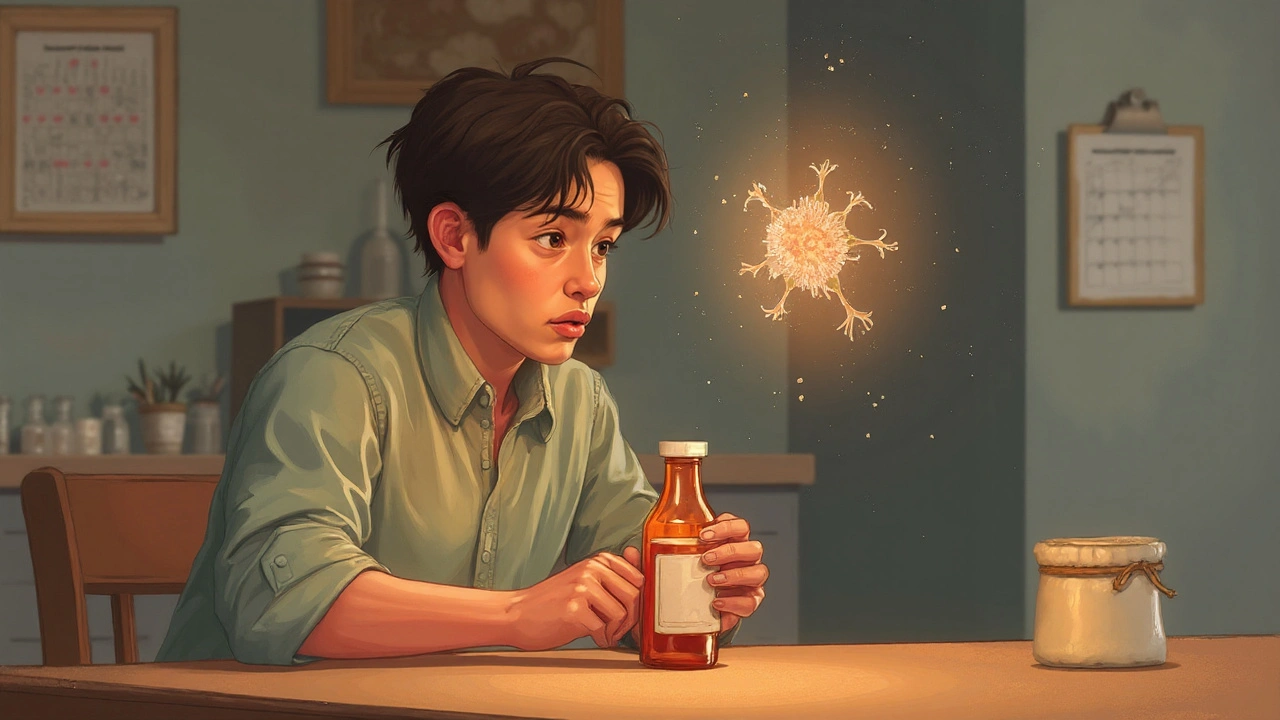Clarithromycin and C. difficile Risk: What Patients Need to Know
22 Sep, 2025Explore how clarithromycin can trigger Clostridioides difficile infection, compare risks with other drugs, and learn practical steps to stay safe.
READ MOREIf you’ve ever taken antibiotics and then got a nasty stomach upset, you might have heard of C. difficile, often called CDI. It’s a bacteria that can cause diarrhea, fever, and stomach cramps, especially after a course of antibiotics. The good news is you can spot it early and take steps to get better faster. Below we break down what to watch for, how doctors treat it, and simple habits that keep it from coming back.
Most people notice watery diarrhea that doesn’t improve after a few days. It can be accompanied by abdominal pain, fever, and sometimes blood in the stool. These signs usually appear a week or more after starting antibiotics, but they can show up later too. If you have any of these symptoms and you’ve been on antibiotics recently, it’s worth calling your doctor right away. Early testing can confirm CDI and help you start the right treatment.
The first step doctors take is to stop the antibiotic that triggered the infection, if possible. Then they prescribe specific medicines that target C. difficile, such as vancomycin or fidaxomicin. Most people feel better within a few days, but it’s important to finish the full course. Probiotics can help restore good bacteria, but talk to a health professional before adding them. To prevent infection, wash your hands thoroughly with soap and water—alcohol wipes don’t kill C. difficile spores. Keep surfaces clean with bleach‑based cleaners, especially in shared bathrooms or hospitals.
Staying hydrated is key because diarrhea can lead to dehydration quickly. Sip water, clear broth, or oral rehydration solutions throughout the day. If you’re feeling weak, eat bland foods like toast, bananas, or rice until your stomach settles. Avoid spicy, fatty, or high‑fiber meals until you’re fully recovered. Monitoring your symptoms helps you know when to seek help again—if diarrhea returns after treatment, it could be a recurrence, which happens in about 20% of cases.
Remember, not every case of diarrhea is CDI, but the risk goes up after heavy antibiotic use, older age, or hospitalization. Being aware of the signs, getting prompt testing, and following the treatment plan can keep the infection from getting serious. Talk to your doctor about any concerns, and don’t skip follow‑up appointments.
Bottom line: C. difficile is preventable and treatable with the right steps. Keep your hands clean, finish prescribed meds, stay hydrated, and watch for warning signs. With these simple actions, you can protect yourself and get back to feeling normal faster.

Explore how clarithromycin can trigger Clostridioides difficile infection, compare risks with other drugs, and learn practical steps to stay safe.
READ MORE